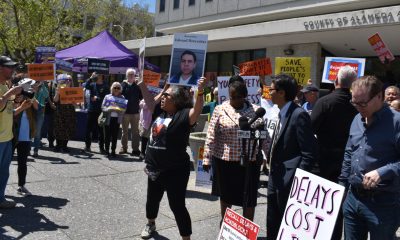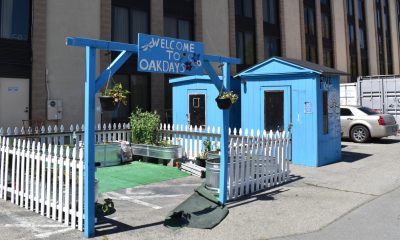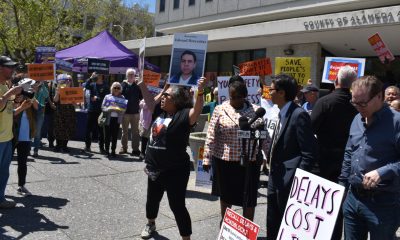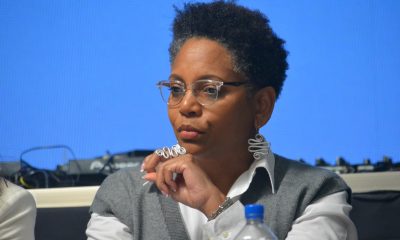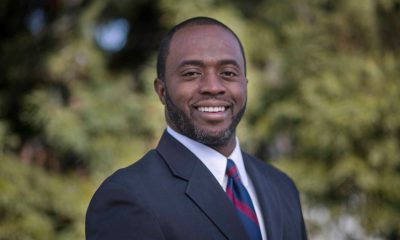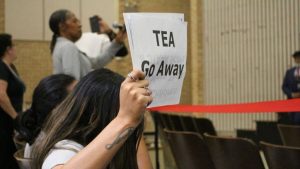Financial Management
Rihanna beats out Beyoncé, Madonna for title of richest female musician
ROLLINGOUT — A day after announcing that Jay-Z is a certified billionaire, Forbes magazine revealed on Tuesday, June 4, 2019, that Rihanna is the richest female musician in the world. The Barbados-born beauty and “Diamonds” singer with more than 71 million Instagram followers beat out some of the music industry’s biggest female performers to take the crown.
By Terry Shropshire
A day after announcing that Jay-Z is a certified billionaire, Forbes magazine revealed on Tuesday, June 4, 2019, that Rihanna is the richest female musician in the world.
The Barbados-born beauty and “Diamonds” singer with more than 71 million Instagram followers beat out some of the music industry’s biggest female performers to take the crown.
Terry Shropshire
Forbes credits the 31-year-old with becoming the first Black woman to lord over a major luxury fashion house, Fenty Beauty, for helping her to amass a vast $600 million fortune and thus take the title as the wealthiest female musician in the world.
Rihanna is a shoulder-length ahead of the Madonna, who has $570 million, and is significantly ahead of Céline Dion and her $450 million fortune. Beyoncé is listed in fourth place at $400 million.
Forbes, the nation’s most esteemed financial magazine, breaks down how Bad Girl RiRi, who broke Michael Jackson’s record for the most Top Ten Billboard hits of all time, amassed her vast fortune.
“Most of that comes not from music but from her partnership with LVMH, the French luxury goods giant run by billionaire Bernard Arnault,” Forbes states on its website. “Rihanna and LVMH co-own the makeup brand Fenty Beauty. It launched in September 2017 at Sephora, another LVMH brand, and online at FentyBeauty.com, quickly becoming a viral success.”
Forbes said the phenomenal sales of Fenty Beauty are bolstered by Rihanna’s mammoth fame and zealous worldwide social media following that few can match.
Perhaps this is why national beauty chain Sephora quivered when SZA claimed she was racially profiled while shopping for Fenty products in their Calabasas, California, location. Sephora announced they are shutting down all of their 400 stores nationwide on Wednesday to make their 1600 employees undergo racial-sensitivity training.
Currently, Rihanna has a 15 percent ownership stake in Fenty Beauty, which has an estimated worth of more than $3 billion.
This article originally appeared in Rollingout.com.
Business
Maximizing Your Bank Branch Experience
In a world of online tools that let you make banking transactions with the touch of a button, the idea of visiting a branch might seem unnecessary. However, if you haven’t visited your local branch recently, you might be surprised by what it has to offer. Your branch is much more than a place to deposit and withdraw money – it can offer the opportunity to build valuable relationships with people who can help you achieve financial independence.
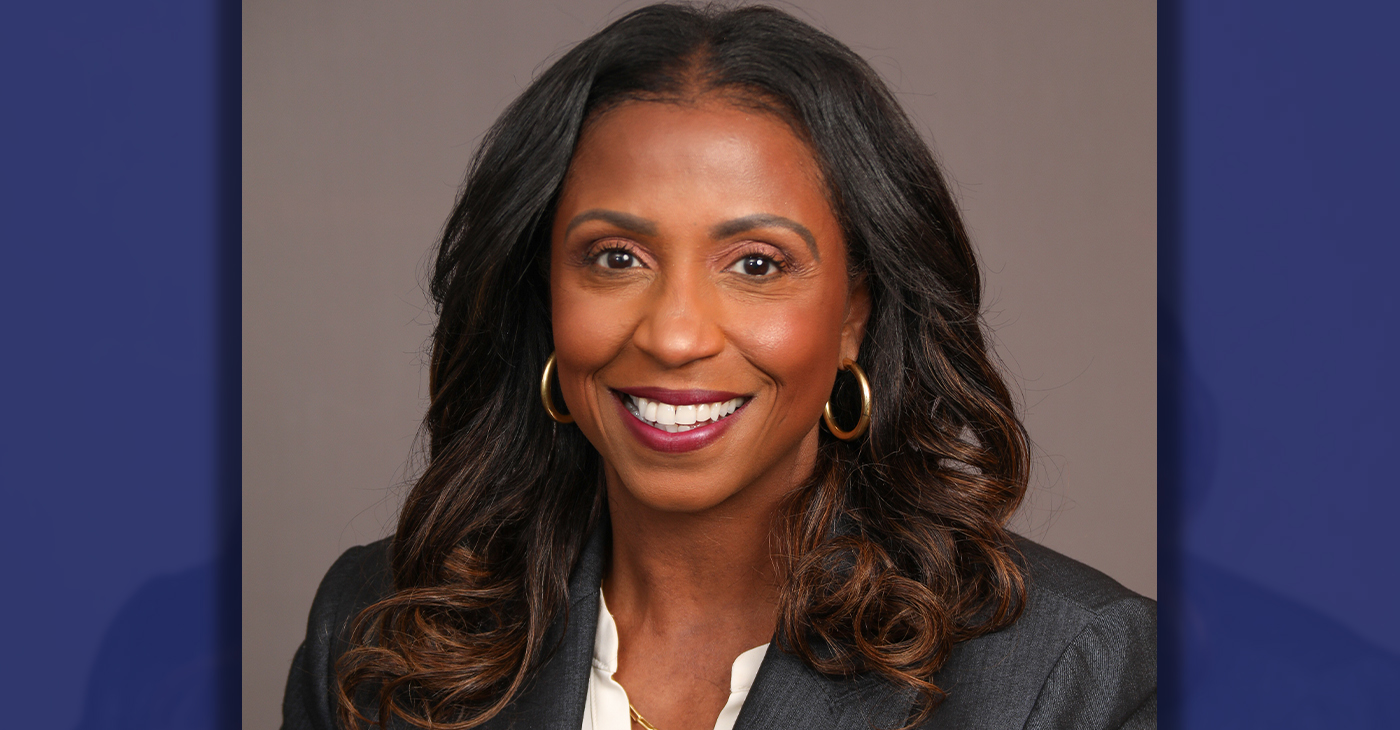
Sponsored by JPMorgan Chase & Co.
In a world of online tools that let you make banking transactions with the touch of a button, the idea of visiting a branch might seem unnecessary.
However, if you haven’t visited your local branch recently, you might be surprised by what it has to offer. Your branch is much more than a place to deposit and withdraw money – it can offer the opportunity to build valuable relationships with people who can help you achieve financial independence.
Diedra Porché, Head of Community and Business Development at Chase, talks about how the bank model has evolved to maximize the branch experience for customers; how connecting with your local branch team can help you think differently about money and investing for your future.
How can a customer feel connected to a bank branch?
I love that question because we ask ourselves the same thing every day. Being part of the community means meeting with local leaders to find out what they need from us and then designing our branches around that. For example, at some of our community branches we have what we call a living room where we can host financial workshops, small business pop-up shops or nonprofit organization meetings. We also hire locally. You feel much more connected talking about financial aspirations with people from your community who went to the same high school, place of worship or maybe frequented the same recreation center down the street when they grew up.
How can I build a relationship with my bank?
Customers should feel comfortable sharing their goals, needs and wants with their banker. Also, it helps to remember the Community Manager is there to help solve your finance challenges and build a roadmap for success. You might have a short-term or long-term goal to open a business, build your credit, become debt-free, buy a home, or save for retirement, and our community team can help. At Chase, we strive to make dreams possible for everyone, everywhere, every day. Your financial future starts with building those relationships.
How can customers change negative perceptions they have about managing their money?
Far too often, customers are intimidated when they visit a bank. Our goal is to demystify banking and money myths empowering people to make the right decisions. For example, a big myth is assuming you need a lot of money to have a bank account. You don’t! Another myth is you need to carry a balance on your credit card to build credit — actively using your credit card can demonstrate that you can use credit responsibly but carrying a balance won’t necessarily improve your credit score. Finally, understanding mobile and online banking safety is key. There are so many safeguards and protections in place to guard your personal information and funds.
What’s an easy step one can take to shift their financial behavior right now?
Cultivating self-awareness is a good first step. Start by taking inventory of your spending. Be honest with yourself about what you need and what you want. Too often, people confuse the two, which leads to bad decisions. Rent is something you need to pay. An extra pair of shoes is something you may want but before you buy them ask yourself if that’s the best use of your hard-earned money. Too often, our beliefs and our fears shape our financial realities. If any of those beliefs are limiting your financial behavior, it’s important to question and examine them, and then decide you’re open to learning something different.
What’s one perception about banking that you’d like to change?
I think folks are surprised there are so many resources available and accessible both at our branches and online, it’s always a good idea to visit a nearby branch and speak to a Community Manager or banker. Outside of what we offer in-branch, our teams also work with local neighborhood partners who provide a variety of services to support the community, businesses and residents. I received a unique piece of feedback from an employee who started with the bank and had lived in the same community his whole life. When he visited his local community branch, he said, “Diedra, when I walked in, I felt dignified.” Every time I recount that story, it warms my heart because that’s what we want — we want our centers to belong to the community.
Bay Area
Oakland Organizations Champion Financial Literacy Empowering Residents with Vital Resources
Rising numbers of unbanked or underbanked individuals, largely due to unmet minimum balance requirements, have become a growing concern. However, organizations across Oakland are stepping up, waging a war against the financial illiteracy that’s plaguing some residents. Up to 4% of Alameda County’s residents lack access to basic banking services, with Black and Hispanic communities making up the majority of that unbanked or underbanked population.
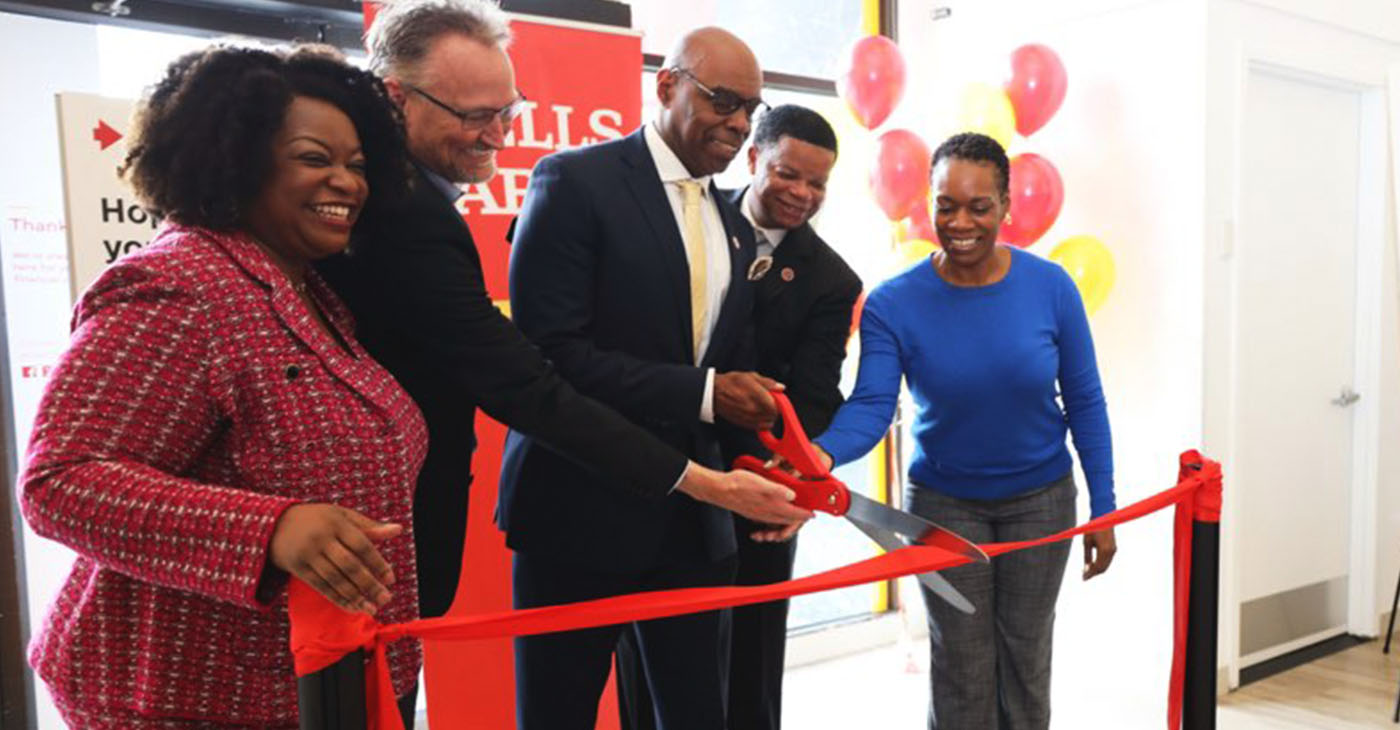
By Magaly Muñoz
Rising numbers of unbanked or underbanked individuals, largely due to unmet minimum balance requirements, have become a growing concern. However, organizations across Oakland are stepping up, waging a war against the financial illiteracy that’s plaguing some residents.
Up to 4% of Alameda County’s residents lack access to basic banking services, with Black and Hispanic communities making up the majority of that unbanked or underbanked population. The term ‘unbanked’ describes people without a checking or savings account, while ‘underbanked’ describes people who have checking or savings accounts but often rely on alternative financial solutions like money orders and payday loans rather than conventional loans and credit cards.
Recently, the downtown Oakland Wells Fargo branch redesigned their bank to include a Hope Inside center in partnership with Operation HOPE, an organization centered around expanding economic opportunities for underserved communities.
The center features free access to financial coaches who work with individuals to gain financial assistance and guidance, such as helping improve credit scores.
Dr. Joaquin Wallace is one of the financial coaches at the Oakland branch who meets one-on-one with clients to provide credit money management solutions and develop strategic plans to assist them with reaching their financial goals.
He’s created a seven-step blueprint for attaining generational wealth. This includes acknowledging that your background and culture have significant influence on how you view finances, focusing on reprogramming financial trauma and gaining financial edification through literacy programs.
He shared that it can be difficult for some to accept their financial struggles because their environment might not allow for these immediate understandings because for many, money is not openly discussed in their communities.
“Money is a topic that is not communicated about — it’s taboo. And so first, you have to at least feel comfortable enough to have this conversation,” Wallace said.
Despite the initial roadblocks, the branch is seeing success with the program. Fifty-seven percent of the clients at the Hope Inside center have increased their credit score by an average of 19 points; 47% of the clients increased their savings by a median of $141; and 50% of clients have successfully reduced their debt by a median of $364.
Sonya Verdine, an Oakland resident of four years, is one of the success stories that Oakland Wells Fargo has helped since their soft launch in 2022.
Verdine’s life has been a rollercoaster of challenges including homelessness, mental health struggles and health scares that ultimately pushed her to improve her life, starting with attempting to correct the financial choices she’d made up to that point.
She was introduced to Wallace’s seven-step generational wealth method which provided her with a roadmap to get her on the right track to financial stability. Since visiting the Hope Inside center, Verdine has seen her credit score go up 200 points and she’s saving almost 10% of her income every month with a goal to someday buy her own home.
“You can take this program, you can start from literally nothing, and the program can help you build because they offer a variety of other services,” Verdine said. “It will be time well spent to participate in this program.”
Another organization that has long taken the reins to combat financial illiteracy and break the cycle of poverty is United Way Bay Area (UWBA), a program that assists families in the region to find financial stability.
Nicole Harden, Vice President of Economic Success at UWBA, says that their Sparkpoint program, which features centers scattered across the Bay Area that help low to middle income families establish financial goals, has grown tremendously since its inception in 2009. Anyone can come into one of their 23 centers to consult with a financial coach to receive guidance on how to increase their income, boost their credit, augment their savings, or reduce their debt.
She shared that it’s important for people to not feel embarrassed when talking about their financial struggles. Organizations like UWBA exist to help provide resources that they know are often inaccessible to underserved communities.
Harden explained that their centers not only cater to low-income families but see a significant number of women of color seeking assistance. As a result, they’ve taken the steps to ensure their programs are culturally competent to make conversations easier and more comfortable.
“We operate from the assumption that folks are creative, resourceful and whole. People have been making it all along, people aren’t broken. There’s systems that are broken, but this is an opportunity to work within the systems and help folks figure out how to navigate that,” she said.
Activism
‘Closing the Racial Equity Gap: A Call to Action’
The report, “Closing the Racial Equity Gap: A Call to Action,” is a result of a series of Homeownership Solutions Summits held in Arizona, California, and Nevada in 2022 and 2023. More than 150 housing advocates, member institutions, and other stakeholders gathered to develop evidence-based ways to boost access to mortgage financing and sustainable homeownership for people of color.
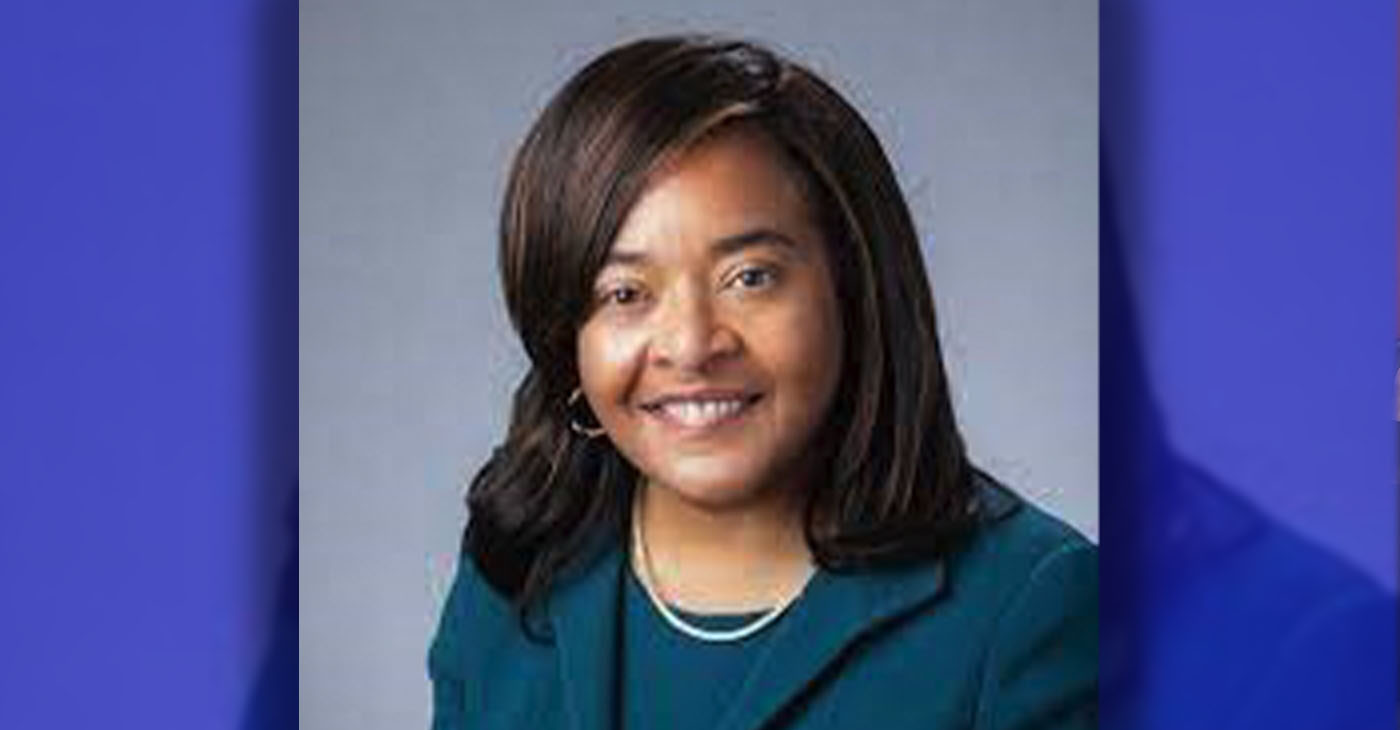
Federal Home Loan Bank of San Francisco Recommends Ways to Close Racial Homeownership and Wealth Gaps in US
By Mary Long, Special to The Post
The Federal Home Loan Bank of San Francisco (FHLBank San Francisco) released a package of recommendations to close the racial wealth gap in the United States.
The report, “Closing the Racial Equity Gap: A Call to Action,” is a result of a series of Homeownership Solutions Summits held in Arizona, California, and Nevada in 2022 and 2023.
More than 150 housing advocates, member institutions, and other stakeholders gathered to develop evidence-based ways to boost access to mortgage financing and sustainable homeownership for people of color.
Among the recommendations:
- Expand mandatory financial education and begin teaching the basics in grade school.
- Broaden the reach of down-payment assistance programs to include buyers who earn more than 80% of area median income.
- Encourage the widespread adoption of novel or modern building practices that can bring down costs without sacrificing safety or comfort.
- Provide support to elected officials in favor of higher-density zoning and less-restrictive land-use ordinances.
- Modernize credit scoring to bring more creditworthy borrowers into the housing finance system.
According to the Urban Institute, in 1960, the gap between Black and white homeowners was less than 27 percentage points.
By 2019, it was nearly 30 points, the widest spread ever. Today, only 45.3% of Black households own a home, compared to 72.2% of whites and nearly 66% of the U.S. population.
The Federal Reserve acknowledges that the average Black family owned about 24 cents for every $1 of white family wealth as of the first quarter of 2023, while the average Hispanic family owned about 23 cents for every $1.
“The inequities entrenched in the homebuying process cannot be eradicated by a single entity or a single solution. To make meaningful change in the industry, we must bring all stakeholders together to consider the options and formulate approaches that make the most of the expertise at hand,” said FHLBank San Francisco CEO Teresa Bryce Bazemore.
“Our Homeownership Solutions Summits provided an opportunity for discussion and collaboration, and we now have pages of practical and sustainable action items that, together, can help people of color gain equal access to homeownership and wealth-building,” Bazemore said.
The Homeownership Solutions Summit series, the first of its kind among Federal Home Loan Banks, is a continuation of FHLBank San Francisco’s equity approach, which includes a two-year, $1.5 million partnership between the FHLBank of San Francisco and the Urban Institute.
Their Racial Equity Accelerator for Homeownership collaboration has produced groundbreaking research on the effectiveness of alternative underwriting methods, the impact of student debt on Black homeownership, the use of mortgage reserve products to help sustain homeownership, and coming soon, how best to harness the power of artificial intelligence for equity in mortgage financing.
-

 Community2 weeks ago
Community2 weeks agoFinancial Assistance Bill for Descendants of Enslaved Persons to Help Them Purchase, Own, or Maintain a Home
-

 Activism4 weeks ago
Activism4 weeks agoOakland Post: Week of April 3 – 6, 2024
-

 Business3 weeks ago
Business3 weeks agoV.P. Kamala Harris: Americans With Criminal Records Will Soon Be Eligible for SBA Loans
-

 Activism3 weeks ago
Activism3 weeks agoOakland Post: Week of April 10 – 16, 2024
-

 Community3 weeks ago
Community3 weeks agoAG Bonta Says Oakland School Leaders Should Comply with State Laws to Avoid ‘Disparate Harm’ When Closing or Merging Schools
-

 Community2 weeks ago
Community2 weeks agoOakland WNBA Player to be Inducted Into Hall of Fame
-

 Community2 weeks ago
Community2 weeks agoRichmond Nonprofit Helps Ex-Felons Get Back on Their Feet
-

 Community2 weeks ago
Community2 weeks agoRPAL to Rename Technology Center for Retired Police Captain Arthur Lee Johnson

